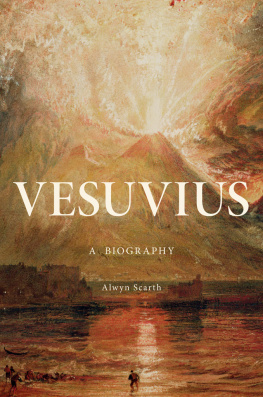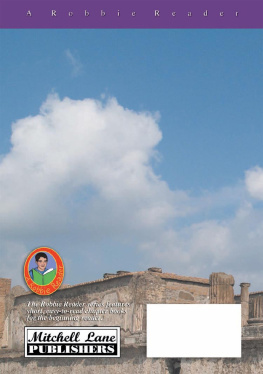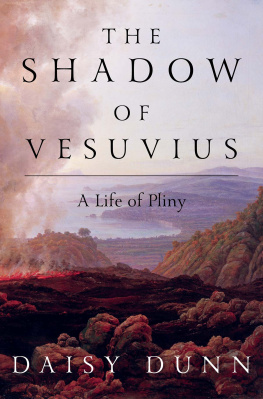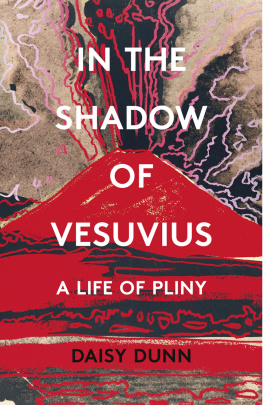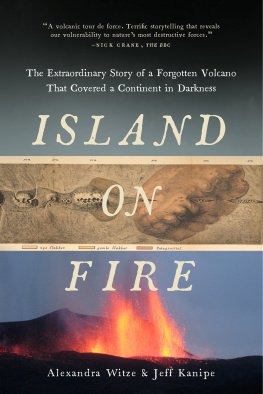Alwyn Scarth - Vesuvius: A Biography
Here you can read online Alwyn Scarth - Vesuvius: A Biography full text of the book (entire story) in english for free. Download pdf and epub, get meaning, cover and reviews about this ebook. year: 2022, publisher: Princeton UP, genre: Detective and thriller. Description of the work, (preface) as well as reviews are available. Best literature library LitArk.com created for fans of good reading and offers a wide selection of genres:
Romance novel
Science fiction
Adventure
Detective
Science
History
Home and family
Prose
Art
Politics
Computer
Non-fiction
Religion
Business
Children
Humor
Choose a favorite category and find really read worthwhile books. Enjoy immersion in the world of imagination, feel the emotions of the characters or learn something new for yourself, make an fascinating discovery.
- Book:Vesuvius: A Biography
- Author:
- Publisher:Princeton UP
- Genre:
- Year:2022
- Rating:3 / 5
- Favourites:Add to favourites
- Your mark:
- 60
- 1
- 2
- 3
- 4
- 5
Vesuvius: A Biography: summary, description and annotation
We offer to read an annotation, description, summary or preface (depends on what the author of the book "Vesuvius: A Biography" wrote himself). If you haven't found the necessary information about the book — write in the comments, we will try to find it.
Vesuvius: A Biography — read online for free the complete book (whole text) full work
Below is the text of the book, divided by pages. System saving the place of the last page read, allows you to conveniently read the book "Vesuvius: A Biography" online for free, without having to search again every time where you left off. Put a bookmark, and you can go to the page where you finished reading at any time.
Font size:
Interval:
Bookmark:

titles of related interest
Confronting catastrophe: new perspectives on natural disasters
David Alexander
Geology and landscapes of Scotland
Con Gillen
La catastrophe: Mount Pele and the destruction of Saint-Pierre, Martinique
Alwyn Scarth
Minerals of Britain and Ireland
A. G. Tindle
Principles of emergency planning and management
David Alexander
Volcanoes of Europe
Alwyn Scarth & Jean-Claude Tanguy
classic geology in europe series
Italian volcanoes Chris Kilburn & Bill McGuire
Auvergne Peter Cattermole
Iceland Thor Thordarson & Armann Hoskuldsson
Canary Islands Juan Carlos Carracedo & Simon Day
North of Ireland Paul Lyle
Leinster Chris Stillman & George Sevastopulo
Cyprus Stephen Edwards, Karen Hudson-Edwards, Joe Cann, John Malpas, Costas Xenophontos
The Northwest Highlands of Scotland Con Gillen
The Inner Hebrides of Scotland Con Gillen
The Gulf of Corinth Mike Leeder, Julian Andrews, Richard Collier, Rob Gawthorpe, Lisa McNeill, Clive Portman, Peter Rowe
A biography
Alwyn Scarth

Copyright Alwyn Scarth 2009
Requests for permission to reproduce material from this work should be sent to Permissions, Princeton University Press
All Rights reserved
Published in 2009 in the United States, Canada, and the Philippine Islands by Princeton University Press, 41 William Street, Princeton, New Jersey 08540
Originating publisher: Terra Publishing. Published by Terra Publishing in the UK and the Republic of Ireland
ISBN: 978-0-691-14390-3
Library of Congress Control Number 2009925151
press.princeton.edu
Vesuvius is the most famous and one of the most violent volcanoes in the world, and Naples and the province of Campania around it have the reputation of housing the most impassioned population in Europe. This biography of Vesuvius evokes the intimate relationship between the volcano and people, which has been recorded in unrivalled detail for more than two thousand years. The Campanians have never been able to remember with serenity, nor to forget with impunity, that they live in a volcanic land that has witnessed some of Europes most powerful and lethal eruptions.
The story of Vesuvius fascinates by its rich geological or geographical history, which has been told by Earth scientists who have often been among the worlds greatest experts on volcanic behaviour. But the Earth sciences are only part of the story. The other side of the narrative recounts the changing social, religious, and intellectual impact that the volcano has always had upon the population. Many vivid and fascinating eye-witness accounts have followed Pliny the Youngers description of the eruption in ad 79 and, ever since, religious beliefs, prejudice, education and fear have stimulated a whole range of human reactions to every volcanic crisis and the devastation and mourning that ensued. This study is based on the latest academic research, but also on a prudent appraisal of contemporary accounts and, wherever possible, I have based the story on eye-witness descriptions by the participants. But they have also to be examined with critical care to discover the grains of truth among the chaff of fantasy and inaccuracies that have distorted many older versions of the Vesuvian story.
Until very recently, volcanic eruptions came as bolts from the blue. Now, however, scientific experts are fast developing techniques for predicting the behaviour of volcanoes. Vesuvius is well worth the closest scrutiny, because it may be approaching its most violent outburst since 1631. Yet, one of the major current environmental and social problems in Campania is to convince the population that the next eruption really will put them in the gravest danger. Indeed, Vesuvius is not the only volcanic threat in the district. In the Campi Flegrei, west of Naples, two periods of earthquakes have caused panic and damage within the past 50 years, although the feared eruption did not take place.
Many sources among the vast range of Vesuvian studies have been assembled in the extensive bibliography. In order to present the narrative with the vitality that the subject deserves, direct references have not been included in the text, although the most important authorities have been noted at the end of each chapter. Similarly too, the few wholly unavoidable technical terms have been explained in the glossary.
This biography draws together strands of enquiry from archaeology, the classics, the Earth sciences, history, literature, planning, politics and religion. I wrote it for all those who would welcome a thorough study of the changing relationships between Europes most violent volcano and the people living around it.
Alwyn Scarth, Paris, August 2008
The author and publishers would like to thank the following for granting permission to use material in this book: Michael Sheridan and the us National Academy of Sciences for the photographs of some results of the Avellino eruption; and to the uk Government Art Collection for the engraving of Sir William Hamilton.
I am extremely grateful to Harry Hine, Christian Morea, and Shirley and Knud Larsen for their invaluable assistance with translations from Latin, Italian and Danish; to Derek Hopper and Tom Scotland, then of 614 Pathfinder Squadron raf , for their photographs of the eruption in 1944; to David Alexander for criticisms of an earlier draft of this manuscript; to Rosalba and Lucia Lepore for offering me much enlightenment about the Neapolitans; and to Roger Jones for all his help and encouragement during this project.
Finally, I should like to thank Catherine Lagoutte, Pat Michie, Anthony Newton, Morag Niven, Brian Storey and David Wallace for their invaluable help, and especially Jean-Louis Renaud for improving and clarifying this manuscript.
Alas, any errors are my own.
Place the most violent volcano in Europe in the midst of one of the most volatile populations on the continent and sparks are bound to fly.
Vesuvius is the most dangerous volcano in Europe when it erupts, and the crowning glory of Campania even when it is dormant. The volcano mirrors the fascinating, effervescent, vibrant and sometimes disturbing city of Naples that faces it across a bay of legendary beauty. It is as if this splendid and paramount couple have nourished each other for centuries. Vesuvius holds the stage: a talisman for the Campanians; a manifest threat to their livelihoods and to their very lives; it destroyed Pompeii and Herculaneum, and preserved them for posterity; and it is the spirit presiding over all the contradictions in the region and its inhabitants. The volcano is all the more dangerous because it rises in the midst of a populous area that has owed its rural wealth to fertile soils weathered from the ash and lavas of previous destructive eruptions. Vesuvius plays a dual role: provider and exterminator; preserver and destroyer; guardian and enemy; tourist attraction and killer; it is a volcano often to be admired, but always obeyed; and it is a volcano with a benign and beautiful appearance that masks a ferocious temper, giving substance to the ambiguity in the famous dictum See Naples and die.
Font size:
Interval:
Bookmark:
Similar books «Vesuvius: A Biography»
Look at similar books to Vesuvius: A Biography. We have selected literature similar in name and meaning in the hope of providing readers with more options to find new, interesting, not yet read works.
Discussion, reviews of the book Vesuvius: A Biography and just readers' own opinions. Leave your comments, write what you think about the work, its meaning or the main characters. Specify what exactly you liked and what you didn't like, and why you think so.

